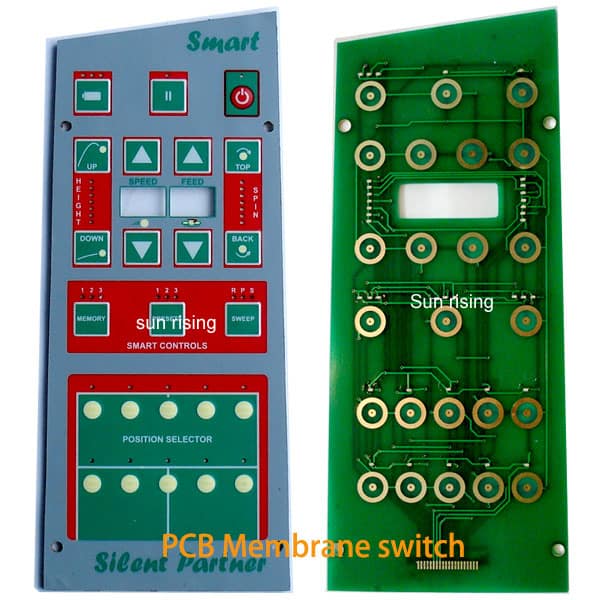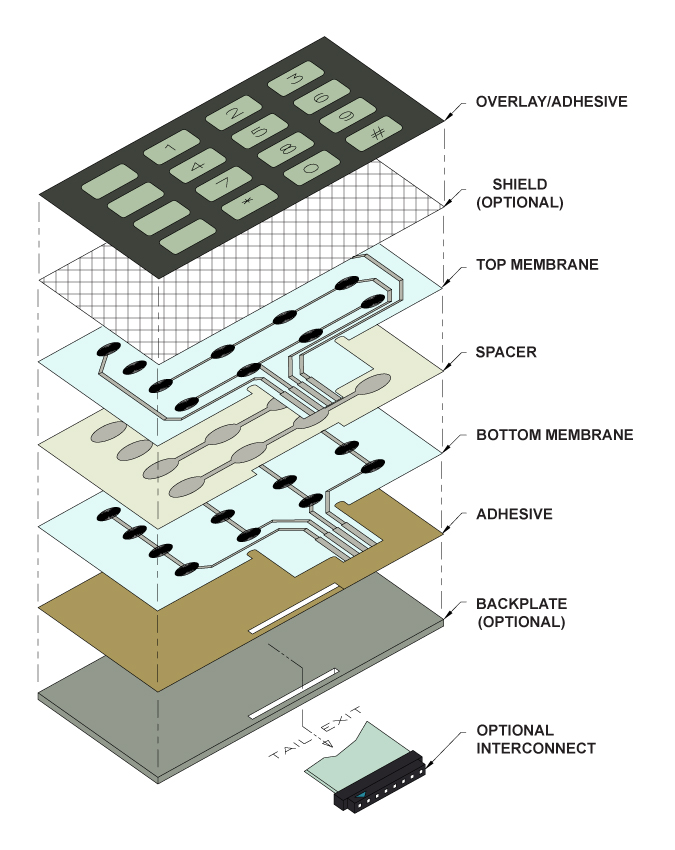Membrane Change Technology: The Secret to Reliable and Cost-Effective User Interfaces
Membrane button innovation has actually become a pivotal element in the style of user interfaces, providing both integrity and cost-effectiveness throughout a diverse variety of applications. Its robust construction makes certain resistance to ecological obstacles, while the adaptability in layout permits customized services that fulfill particular industry requirements. As we discover the diverse benefits of membrane buttons, their possibility for technology questions about future applications and evolving patterns. What does the following chapter hold for this modern technology in a significantly digital landscape?
Understanding Membrane Layer Switch Over Technology
Membrane button technology is a widely used interface remedy in different electronic tools, providing a seamless blend of capability and layout. This technology includes multiple layers of materials, normally containing a visuals overlay, spacer layer, and a circuit layer. The graphic overlay shows the user interface aspects, while the spacer layer divides the circuit layer from the overlay till a customer activates a button.
When pressure is related to the overlay, the circuit layer completes the electrical circuit, sending a signal to the gadget. This device permits for various configurations, consisting of responsive comments and backlighting choices, enhancing user communication. Membrane layer buttons are generally made utilizing resilient materials such as polyester or polycarbonate, making certain longevity and resistance to environmental elements like moisture and dust.
The adaptability of membrane layer changes allows their application in varied markets, consisting of clinical devices, customer electronics, and commercial controls. Their compact style allows for assimilation into space-constrained settings, providing an efficient user interface without compromising aesthetic charm. Comprehending the complexities of membrane switch innovation is crucial for suppliers and designers seeking to develop trusted and effective human-machine interfaces.
Key Advantages of Membrane Layer Switches
While numerous interface solutions exist, membrane changes offer unique advantages that make them a favored choice in countless applications. One of the key benefits is their longevity; membrane switches are created to withstand rough ecological conditions, consisting of wetness, dust, and temperature fluctuations, making sure durable efficiency. This strength substantially minimizes the requirement for regular substitutes, consequently decreasing overall upkeep prices.

Furthermore, membrane layer buttons are light-weight and compact, making them appropriate for applications where room is restricted. Their inconspicuous design adds to a smooth look without compromising capability.
Cost-effectiveness is also a notable advantage, as the manufacturing process for membrane layer switches often tends to be cheaper contrasted to traditional mechanical switches. This affordability, integrated with their dependability and simplicity of installation, settings membrane switches as a practical option for a vast array of sectors seeking reliable and reliable individual interfaces.
Applications Across Various Industries
Just how do membrane switches adapt to the varied requirements of various industries? Membrane layer button technology is progressively recognized for its versatility, making it ideal for a large range of applications throughout several industries.
In customer electronics, see here now membrane layer buttons give a compact service for remote controls and home devices, boosting customer experience with intuitive design. Additionally, the commercial market leverages membrane layer buttons for equipment control panels, profiting from their resistance to rough environments, such as dampness and dust.
Army and aerospace applications additionally utilize membrane switches for their integrity and ability to hold up against severe problems, making sure operational performance in essential situations. In addition, the food and beverage market adopts these switches for automated systems, where cleanliness and convenience of operation are vital. Eventually, membrane layer switches are customized to fulfill the distinct needs of each market, confirming their essential function in contemporary technology interfaces
Style and Customization Choices

In the world of membrane layer switch innovation, style and customization choices play a crucial role in boosting functionality and user communication. These buttons can be customized to fulfill certain functional requirements and aesthetic choices, making them flexible components in numerous applications.
Among the key personalization options is the layout of the button itself, which can be made to accommodate one-of-a-kind individual interfaces and ergonomic factors to consider. By readjusting the form, dimension, and setup of switches, makers can develop instinctive layouts that help with convenience of use. Furthermore, the incorporation of various shades and visuals overlays enables branding and boosted exposure, guaranteeing that users can promptly identify features.
Moreover, membrane switches can be crafted with different tactile feedback devices, such as raised buttons or distinct clicks, to improve the user experience. Various products can likewise be chosen for resilience and ecological resistance, addressing variables such as moisture, temperature variations, and chemical exposure.
Ultimately, the comprehensive layout and modification options offered in membrane layer switch innovation equip services to create customized remedies that not just meet functional requirements however home likewise line up with their this contact form branding and functional requirements.

Future Fads in Membrane Buttons
As membrane layer button modern technology remains to develop, future fads are significantly concentrated on improving user experience and integrating innovative functionalities. One considerable fad is the assimilation of touch-sensitive and capacitive technologies right into traditional membrane layer switches. This growth enables more instinctive interface, providing tactile comments while keeping a sleek layout.
One more arising fad is the usage of environmentally pleasant materials, driven by the growing need for sustainable manufacturing techniques. Producers are looking for to decrease their carbon impact by using recyclable substratums and low-impact inks, aligning with global sustainability objectives.
Additionally, the rise of the Web of Things (IoT) is prompting the unification of smart functions into membrane layer switches. Boosted connectivity options will make it possible for tools to interact with each various other, enabling smooth assimilation into wider systems.
Furthermore, advancements in printing modern technologies, such as electronic printing, are enabling greater layout versatility and customization. This makes it possible for suppliers to create detailed styles and dynamic colors cost-effectively.

Conclusion
In final thought, membrane switch innovation stands for a vital advancement in individual interface design, using considerable advantages in longevity, modification, and cost-effectiveness. Its extensive applicability throughout diverse sectors highlights its significance in modern-day innovation. As innovations remain to arise, particularly in touch-sensitive interfaces and sustainable materials, the capacity for membrane layer changes to boost individual experience and functionality continues to be promising. Continued exploration of this modern technology will likely produce better improvements and expand its extent in future applications.